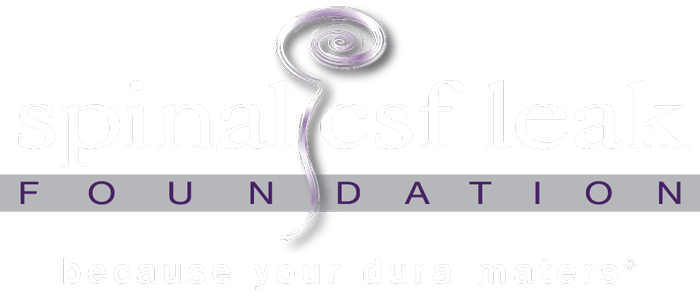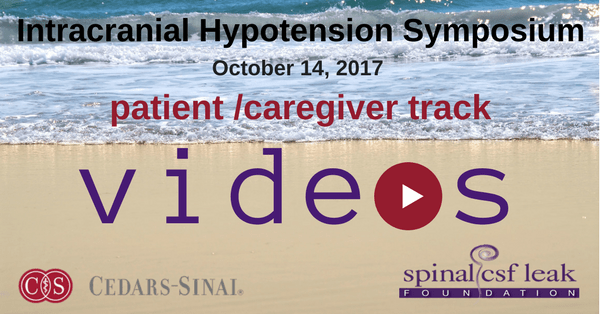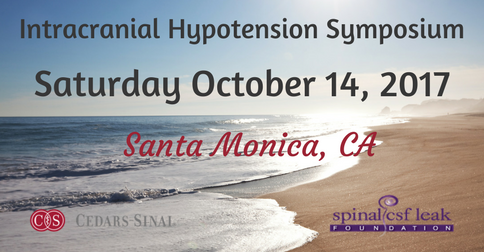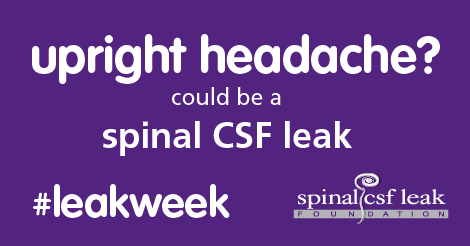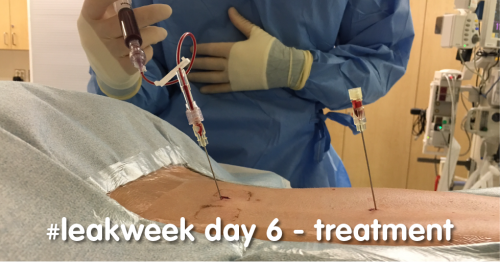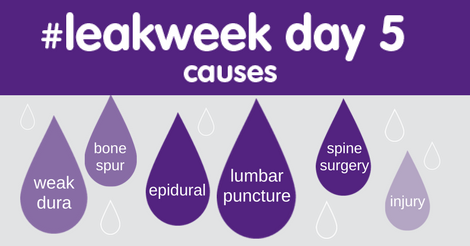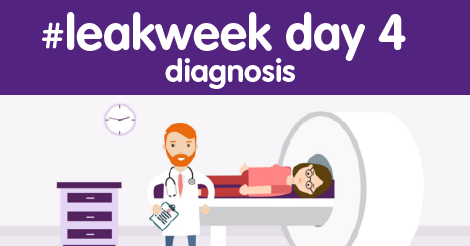The videos from the sessions in the patient/caregiver track of the Intracranial Hypotension Symposium on October 14th are now available for on-demand viewing. If you were unable to attend, here is your chance to view the presentations. The professional track videos...
Updates from the Spinal CSF Leak Foundation
New Review Published by Duke Team
This is an excellent new review on the diagnosis and treatment of spontaneous intracranial hypotension from the team of neuroradiologists at Duke University. Update on the Diagnosis and Treatment of Spontaneous Intracranial Hypotension. Kranz PG, Malinzak MD, Amrhein...
Normal CSF Pressures Common in Spontaneous Intracranial Hypotension
Intracranial hypotension means low pressure inside the head. This refers to low cerebrospinal fluid (CSF) pressure, which results from the loss of CSF volume, almost always from a CSF leak at the level of the spine. However, normal cerebrospinal fluid (CSF) pressures...
Why are Diagnostic Codes Important?
When health care professionals see patients, they attach diagnostic labels with codes to the patient’s medical record. These codes are from ICD -10, the International Classification of Diseases, Tenth Revision. How are these used and why are these codes important? •...
Lumbar Puncture – reducing the risk of post-procedure headache
A lumbar puncture is the most common cause of a spinal cerebrospinal fluid (CSF) leak. The most common manifestation is a positional headache within a day or two of the procedure. Can we reduce the risk? Sometimes, the dura (tough outermost layer of meninges holding...
Support us when you shop
There are two ways that you can support us when you shop online at no cost to you. 1) When you shop with Amazon, start with AmazonSmile and Amazon will donate to our foundation - smile.amazon.com http://smile.amazon.com/ch/47-1141080 2) When you shop a wide...
POTS or a spinal CSF leak?
POTS, positional orthostatic tachycardia syndrome, is a type of autonomic dysfunction in which patients experience symptoms and signs with upright posture. Spinal CSF leak also causes symptoms and signs that are worse with upright posture. It should be no surprise...
Intracranial Hypotension Symposium Oct 2017 – Registration is Open
The Intracranial Hypotension Symposium to be held on October 14, 2017 will be hosted by Cedars-Sinai in partnership with Spinal CSF Leak Foundation. Location: Casa del Mar, 1910 Ocean Way, Santa Monica, CA 90405 Course Description: This full-day multidisciplinary...
#leakweek – day 7
Today is DAY 7 of Spinal CSF Leak Awareness Week. Our focus for our last day of Leak Week is: Prognosis of spinal cerebrospinal fluid (CSF) leak and Looking Forward. Prognosis While published patient outcomes remain rather limited, we do know that most patients do...
#leakweek – day 6
Today is DAY 6 of Spinal CSF Leak Awareness Week. Our focus for today is: Treatment of spinal cerebrospinal fluid (CSF) leak, also known as intracranial hypotension. Treatment Treatments for spinal CSF leaks vary from conservative to surgical procedures. The specific...
#leakweek – day 5
Today is DAY 5 of Spinal CSF Leak Awareness Week. We will focus today on Causes and Classification of spinal cerebrospinal fluid (CSF) leak, also known as intracranial hypotension. Causes There are 3 main causes of spinal CSF leak: • Medical procedures (lumbar...
#leakweek – day 4
Today is DAY 4 of Spinal CSF Leak Awareness Week. Our focus for today is on: Diagnosis of spinal Cerebrospinal fluid (CSF) leak. For the majority of patients with spinal CSF leak, the diagnosis is missed entirely or delayed by months or years. Because this is...
